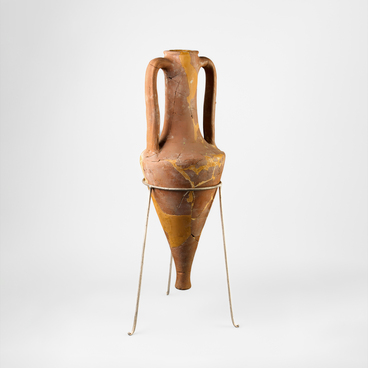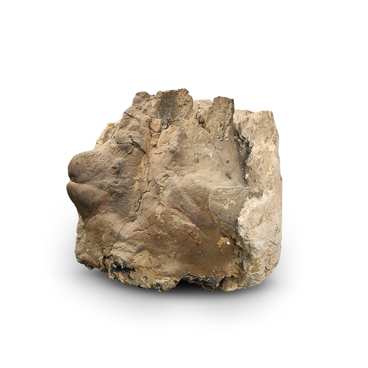The collection of the Belgorod State Historical and Local History Museum includes a bronze plaque of the Scythian culture of the 4th century BCE. The plaque is made in the shape of a snarling wolf or dog head. There is a vertical loop on the reverse side. The plaque is a horse harness decoration, commonly referred to as a cheek piece.
The cheek piece was found during excavations in the village of Durovka (now the village of Verbnoe in the Krasnensky District of the Belgorod region). It entered the museum’s collection in 1971.
Among the diverse archaeological finds belonging to the past of the Belgorod region, the preserved material monuments of the Iron Age deserve special attention. The most developed and rich culture of this time in the Belgorod region was left by the tribes of the Scythian era of the 7th–4th centuries BCE.
The tribes could lead a nomadic and sedentary lifestyle. The sedentary tribes built rectangular ground structures with a woven frame coated with clay for housing. The Scythians grew wheat, barley, millet, onion and garlic. Subsidiary trades included hunting and fishing. The Scythians mastered various crafts: bone carving, weaving, and metallurgical production.
Various weapons and equipment are also found in the burial mounds: arrowheads, fragments of an iron scale armor, swords, and spearheads. Horse harness items were also discovered here: plaques with leather fragments, cheek pieces, headbands, and nosebands with images of various animals: bears, seahorses, wolves, and birds of prey.
In the Scythian world, an object decorated with an image of an animal acquired magical significance: the Scythians believed that all the qualities of the depicted animals were transmitted to the warrior, his weapon, and horse. For instance, a horse or kulan symbolized freedom and willpower, a boar embodied masculine strength and martial valor, and a deer represented grace and beauty. Lions and panthers symbolized strength and power, with the panther often used as a symbol of a warrior.
The past keeps its secrets securely and jealously,
but thanks to the work of archaeologists, we have an excellent opportunity to
see the past and study it.


